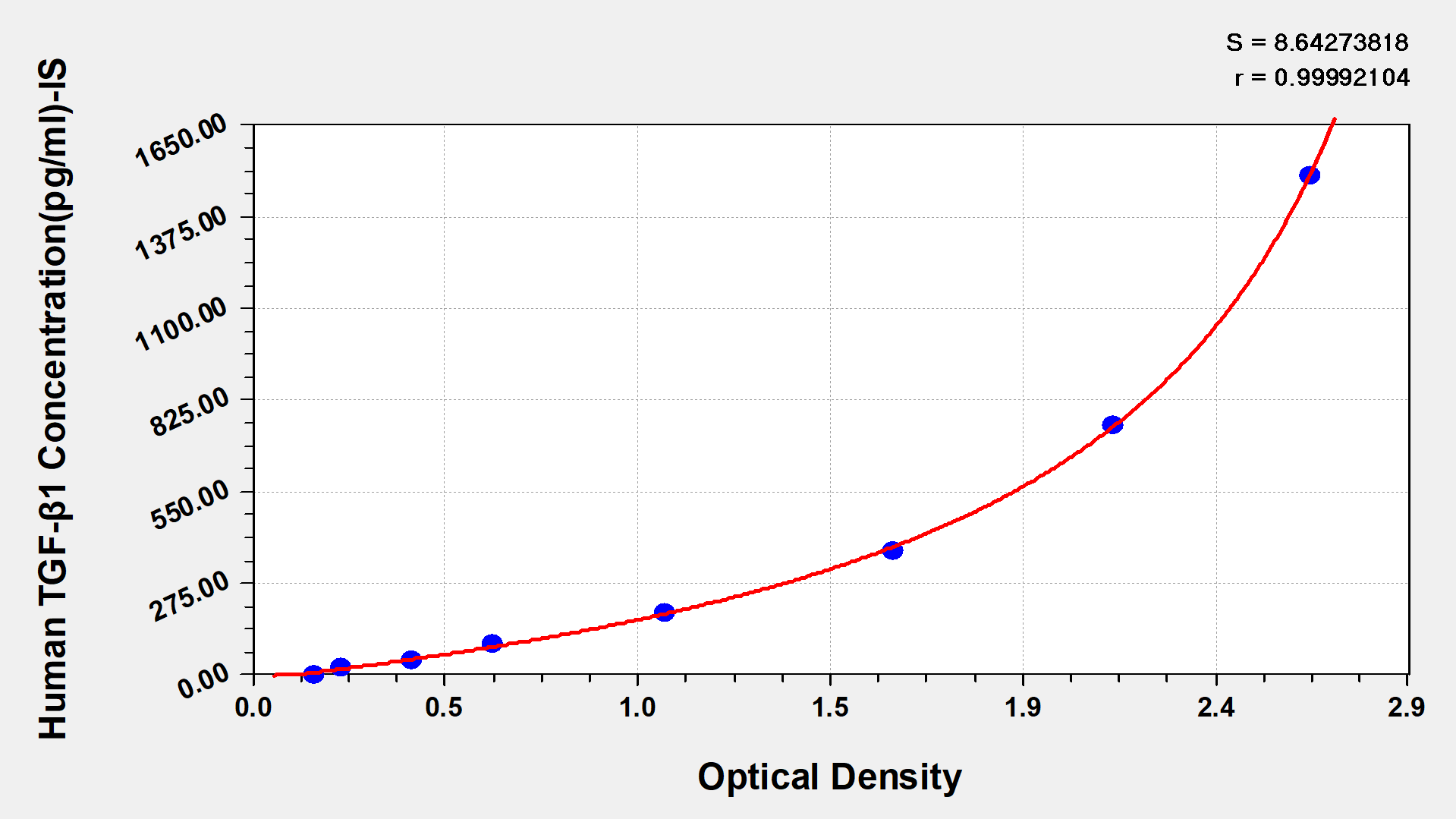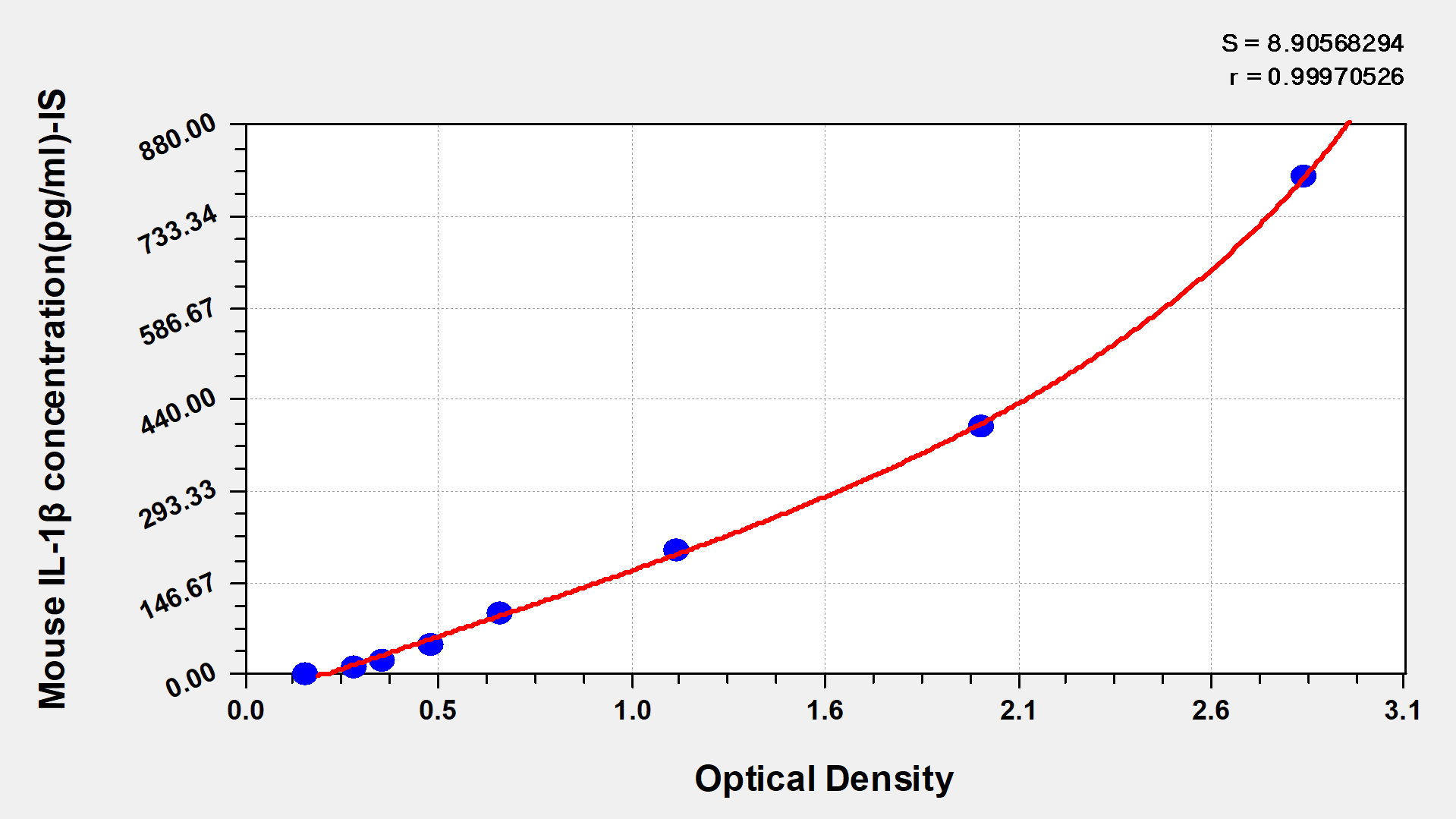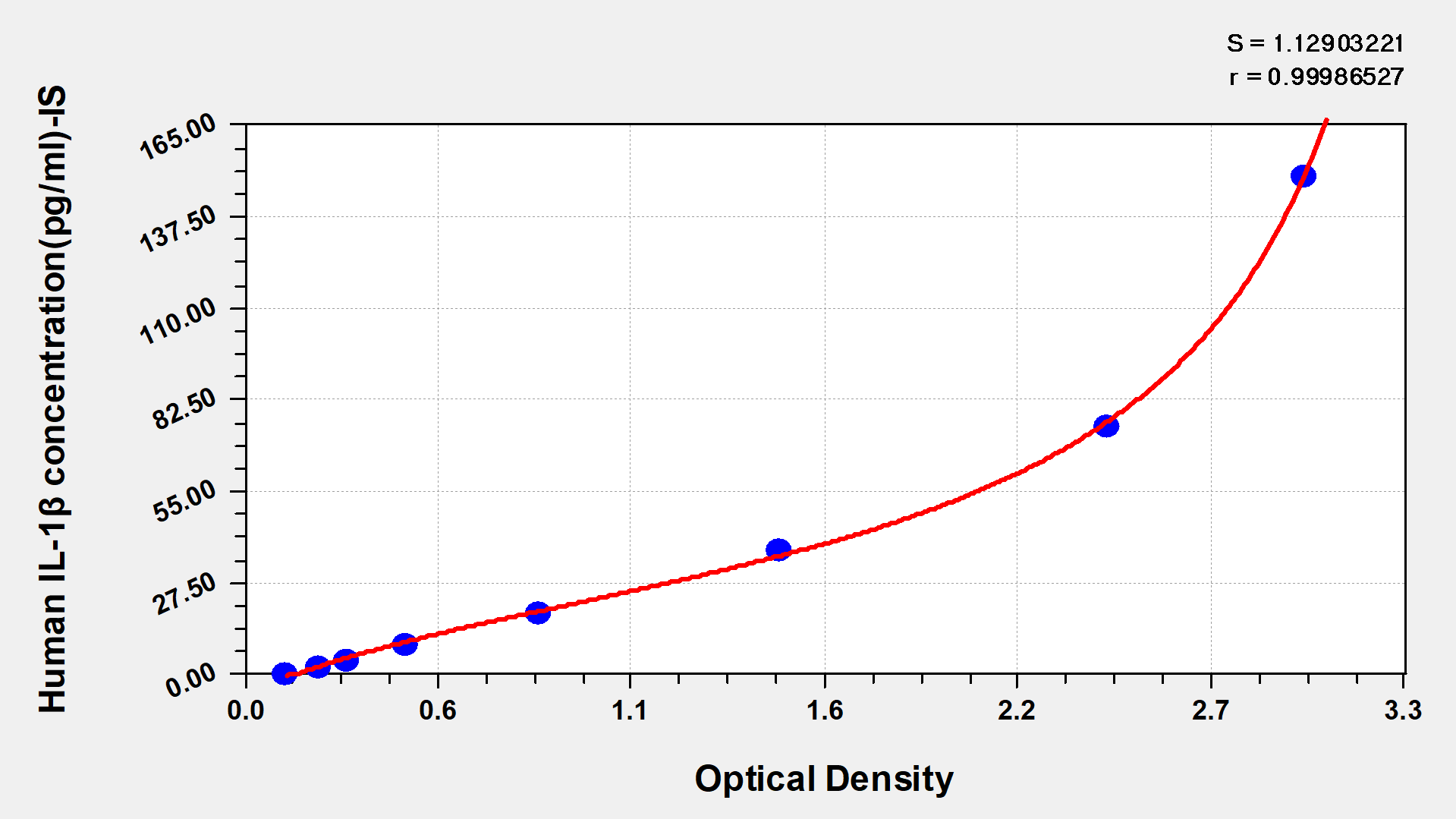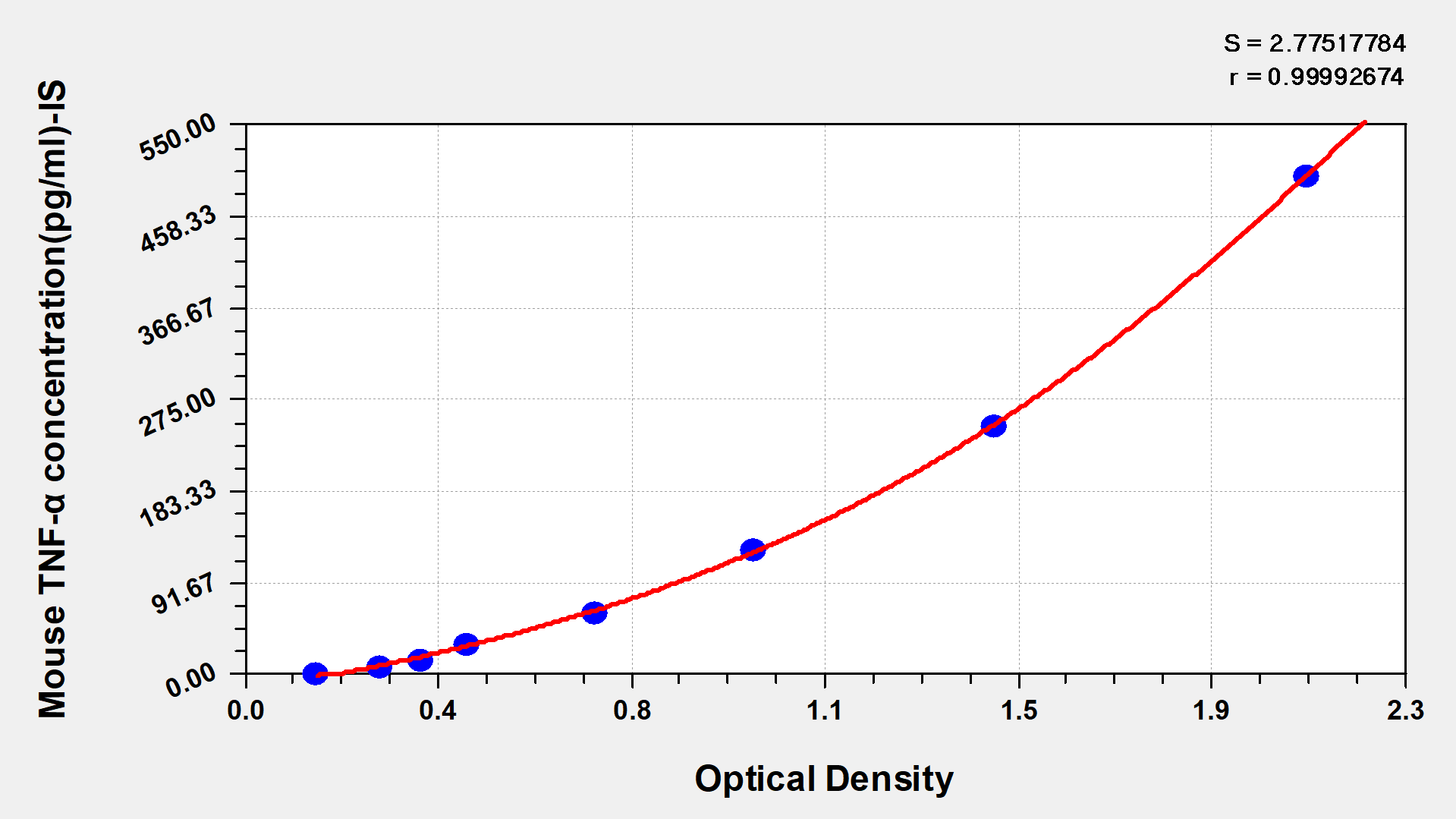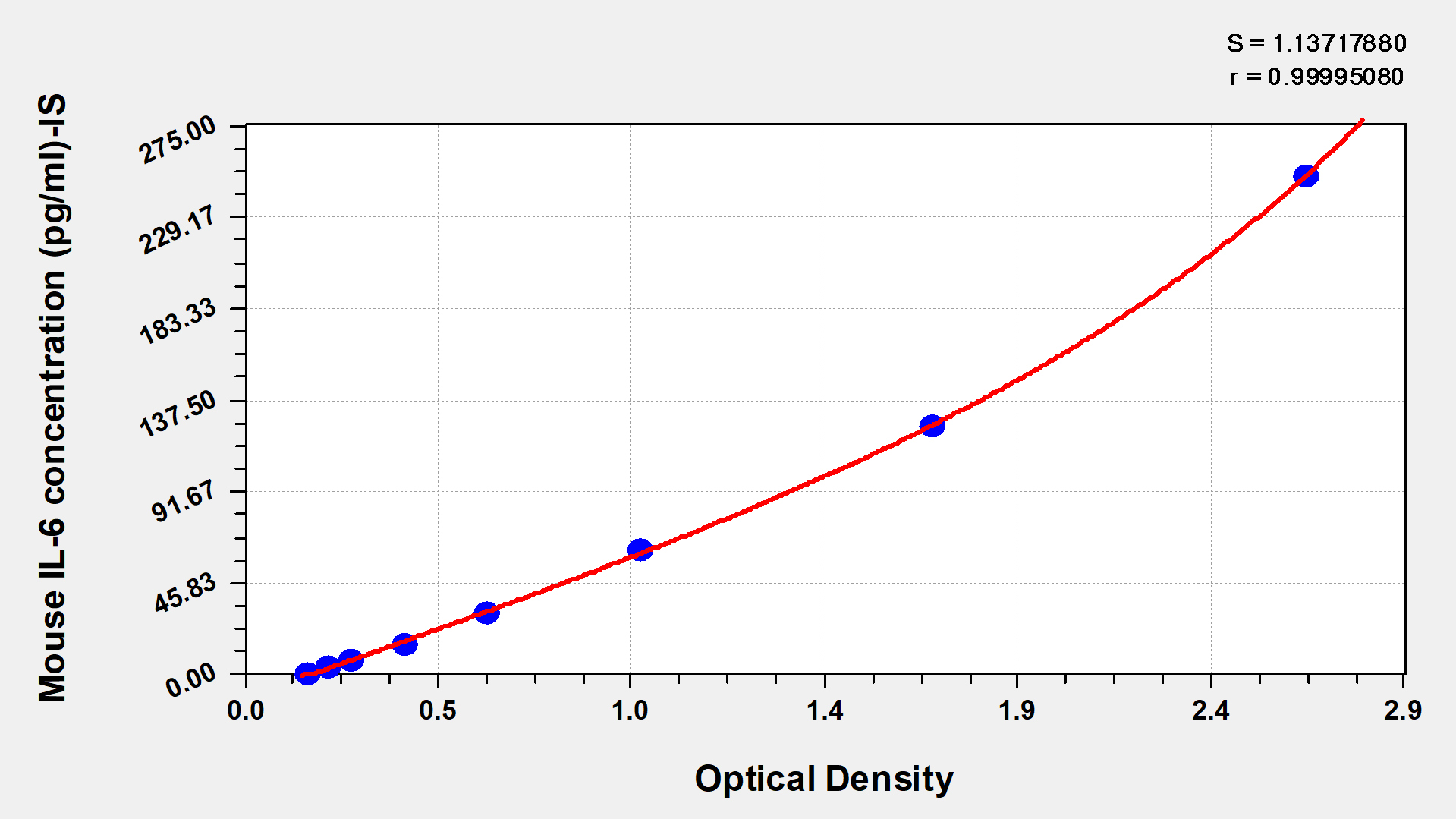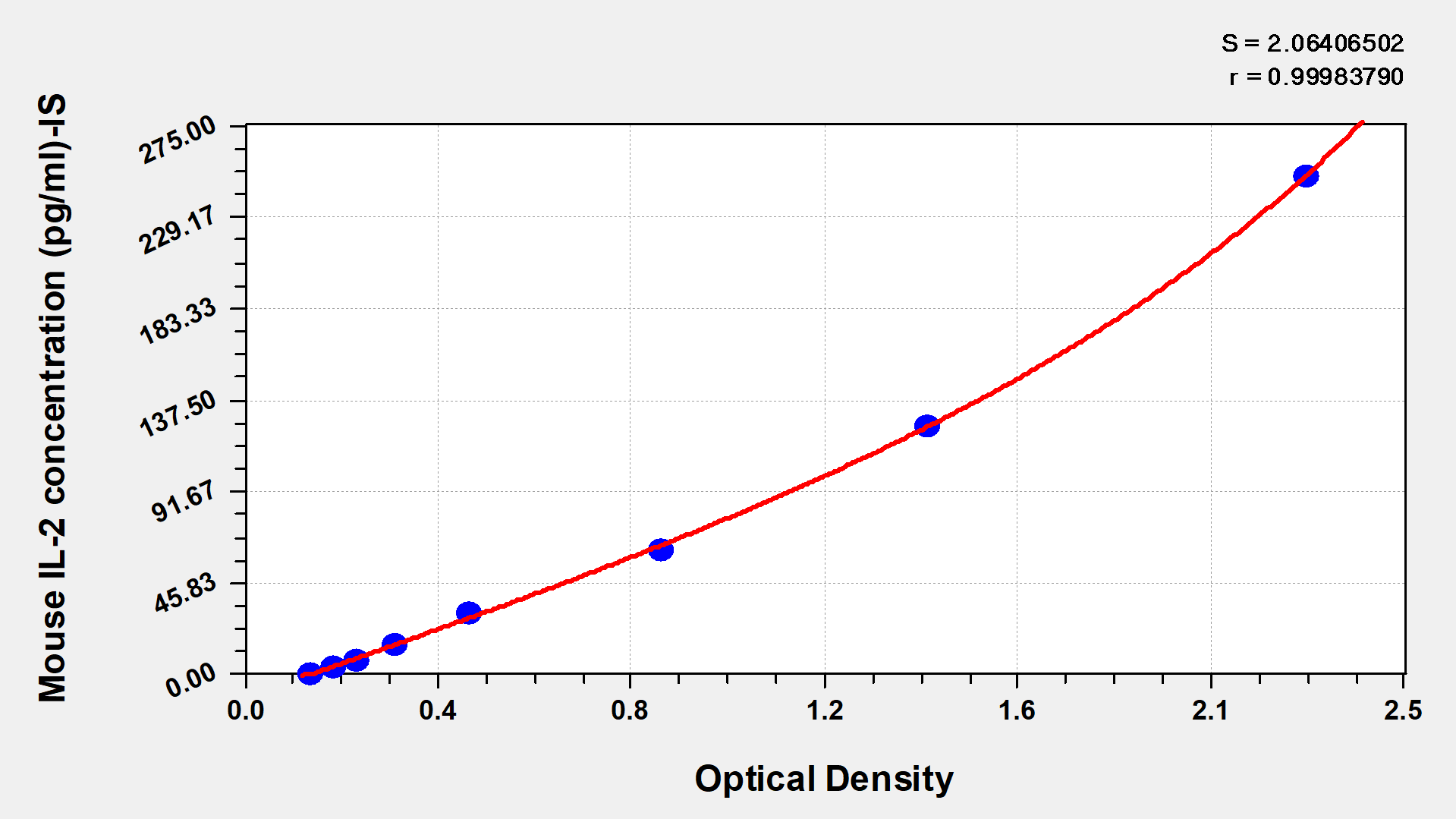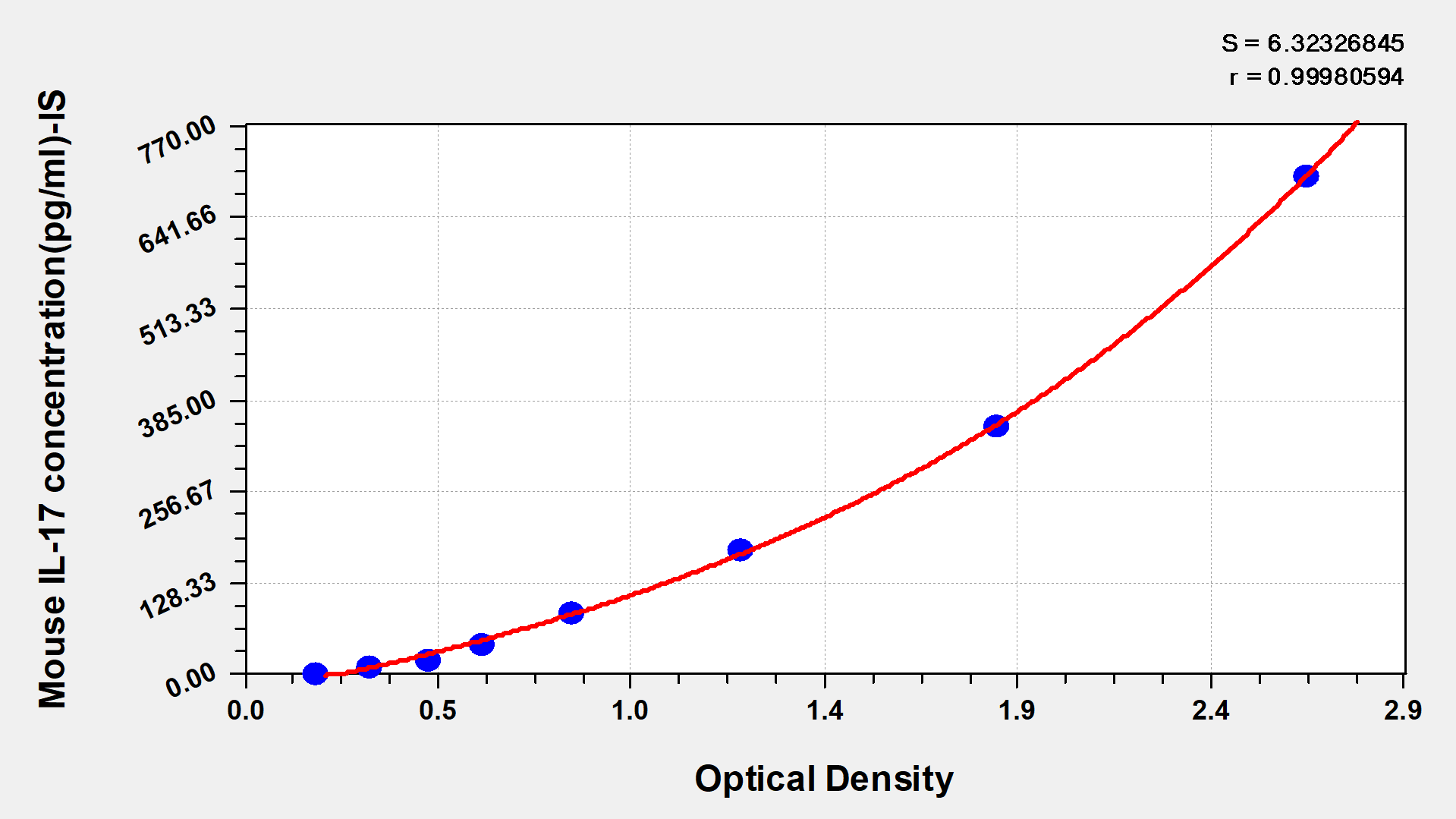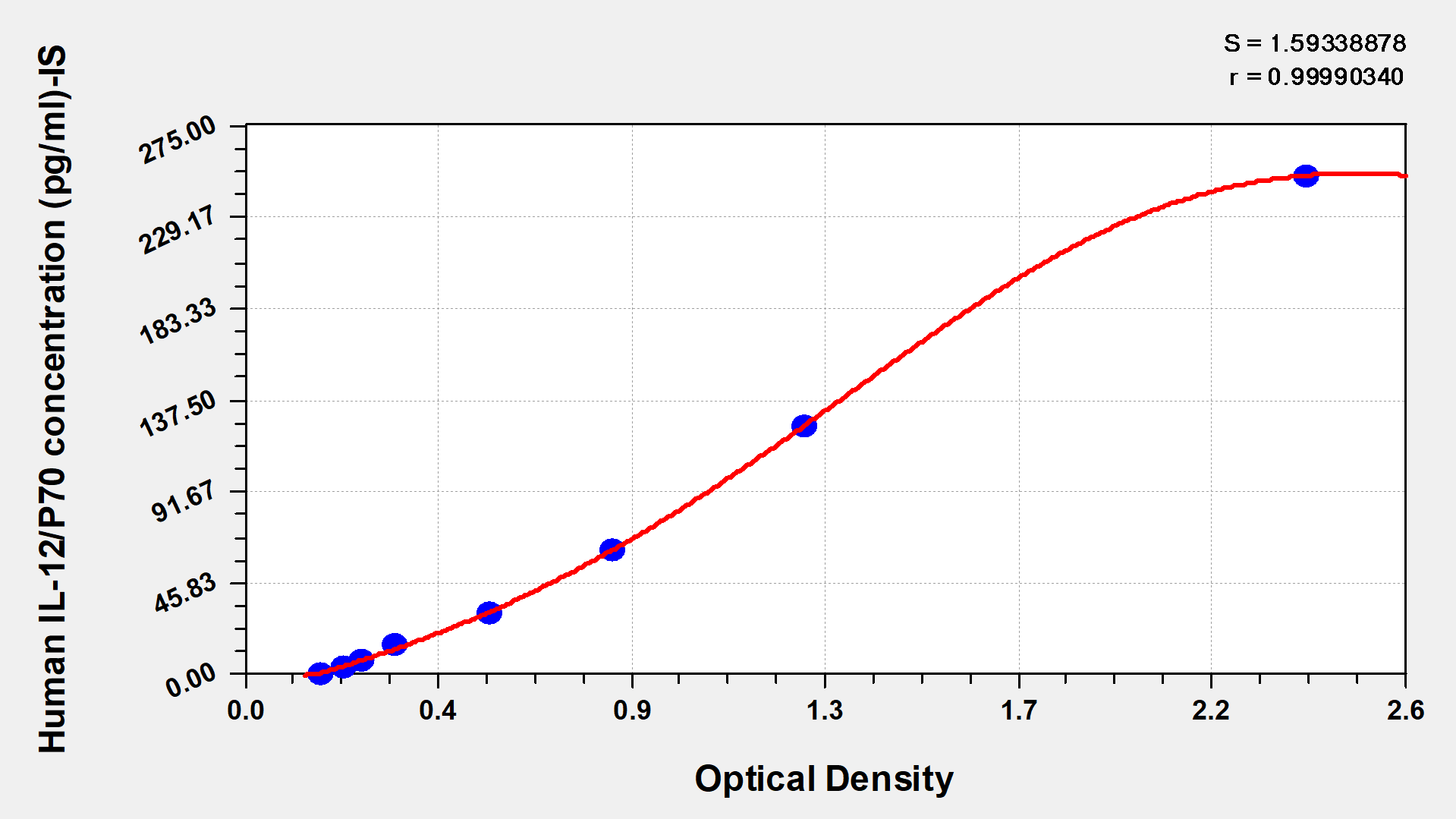Bovine Heat Shock Protein 70,HSP-70 ELISA Kit
-
中文名稱:牛熱休克蛋白70(HSP-70)酶聯(lián)免疫試劑盒
-
貨號:CSB-E13452B
-
規(guī)格:96T/48T
-
價格:¥4200/¥3000
-
其他:
產(chǎn)品詳情
-
產(chǎn)品描述:牛熱休克蛋白70(HSP-70)酶聯(lián)免疫試劑盒(CSB-E13452B)為競爭法ELISA試劑盒,定量檢測血清、血漿、組織勻漿樣本中的HSP70含量。HSP70是一類廣泛存在的熱休克蛋白,在機(jī)體應(yīng)對應(yīng)激、維持細(xì)胞內(nèi)環(huán)境穩(wěn)定等方面有重要作用。研究發(fā)現(xiàn)其參與調(diào)節(jié)蛋白折疊、轉(zhuǎn)運(yùn)及降解等機(jī)制。同時,它與腫瘤發(fā)生發(fā)展、神經(jīng)退行性疾病等病理過程密切相關(guān),是潛在的藥物靶點(diǎn)。試劑盒檢測范圍為1.25 ng/mL-20 ng/mL,該產(chǎn)品適用于畜牧科研領(lǐng)域,可用于探究熱應(yīng)激對牛生理機(jī)能的影響、疾病模型中細(xì)胞應(yīng)激機(jī)制研究,或評估飼養(yǎng)環(huán)境因素對牛群健康狀態(tài)的潛在影響,為動物生理學(xué)、病理學(xué)及畜牧業(yè)管理研究提供可靠工具。本品僅用于科研,不用于臨床診斷,產(chǎn)品具體參數(shù)及操作步驟詳見產(chǎn)品說明書。
-
縮寫:HSP-70
-
Uniprot No.:
-
種屬:Bos taurus (Bovine)
-
樣本類型:serum, plasma, tissue homogenates
-
檢測范圍:1.25 ng/mL-20 ng/mL
-
靈敏度:1.25 ng/mL
-
反應(yīng)時間:1-5h
-
樣本體積:50-100ul
-
檢測波長:450 nm
-
研究領(lǐng)域:Signal Transduction
-
測定原理:quantitative
-
測定方法:Competitive
-
精密度:
Intra-assay Precision (Precision within an assay): CV%<15% Three samples of known concentration were tested twenty times on one plate to assess. Inter-assay Precision (Precision between assays): CV%<15% Three samples of known concentration were tested in twenty assays to assess. -
線性度:
To assess the linearity of the assay, samples were spiked with high concentrations of bovine HSP-70 in various matrices and diluted with the Sample Diluent to produce samples with values within the dynamic range of the assay. Sample Serum(n=4) 1:1 Average % 96 Range % 91-101 1:2 Average % 90 Range % 85-94 1:4 Average % 98 Range % 92-103 1:8 Average % 93 Range % 86-98 -
回收率:
The recovery of bovine HSP-70 spiked to levels throughout the range of the assay in various matrices was evaluated. Samples were diluted prior to assay as directed in the Sample Preparation section. Sample Type Average % Recovery Range Serum (n=5) 84 80-89 EDTA plasma (n=4) 95 91-99 -
標(biāo)準(zhǔn)曲線:
These standard curves are provided for demonstration only. A standard curve should be generated for each set of samples assayed. 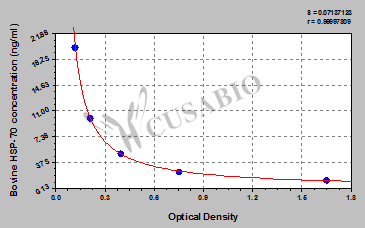
ng/ml OD1 OD2 Average 20 0.135 0.131 0.133 10 0.219 0.231 0.225 5 0.427 0.401 0.414 2.5 0.747 0.792 0.770 1.25 1.724 1.626 1.675 -
數(shù)據(jù)處理:
-
貨期:3-5 working days
引用文獻(xiàn)
- Weather Resilience in Grazing Beef Heifers with Differing Residual Feed Intake MC Londono Mendez,Thesis&Dissertation,2024
- Welfare and performance benefits of shade provision during summer for feedlot cattle in a temperate climatic zone DW Miller, AL Barnes, T Collins,Journal of animal science,2024
- A study on stress response and fertility parameters in phenotypically thermotolerant and thermosensitive dairy cows during summer heat stress I Nanas,Reprod Domest Anim,2020
- Crossbred Cows Respond Differently from Holstein Frisian and Bos Indicus to Heat Stress Under Various Climatic Conditions. Khan, Ikramullah.et al,Sarhad Journal of Agriculture,2018
- Inorganic zinc supplementation modulates heat shock and immune response in heat stressed peripheral blood mononuclear cells of periparturient dairy cows Aasif Ahmad Sheikh.et al,Theriogenology.,2017
- Effects of transport distance, lairage time and stunning efficiency on cortisol, glucose, HSPA1A and how they relate with meat quality in cattle Chulayo AY.et al,Meat Sci.,2016
靶點(diǎn)詳情
-
功能:Molecular chaperone implicated in a wide variety of cellular processes, including protection of the proteome from stress, folding and transport of newly synthesized polypeptides, activation of proteolysis of misfolded proteins and the formation and dissociation of protein complexes. Plays a pivotal role in the protein quality control system, ensuring the correct folding of proteins, the re-folding of misfolded proteins and controlling the targeting of proteins for subsequent degradation. This is achieved through cycles of ATP binding, ATP hydrolysis and ADP release, mediated by co-chaperones. The co-chaperones have been shown to not only regulate different steps of the ATPase cycle, but they also have an individual specificity such that one co-chaperone may promote folding of a substrate while another may promote degradation. The affinity for polypeptides is regulated by its nucleotide bound state. In the ATP-bound form, it has a low affinity for substrate proteins. However, upon hydrolysis of the ATP to ADP, it undergoes a conformational change that increases its affinity for substrate proteins. It goes through repeated cycles of ATP hydrolysis and nucleotide exchange, which permits cycles of substrate binding and release. The co-chaperones are of three types: J-domain co-chaperones such as HSP40s (stimulate ATPase hydrolysis by HSP70), the nucleotide exchange factors (NEF) such as BAG1/2/3 (facilitate conversion of HSP70 from the ADP-bound to the ATP-bound state thereby promoting substrate release), and the TPR domain chaperones such as HOPX and STUB1. Maintains protein homeostasis during cellular stress through two opposing mechanisms: protein refolding and degradation. Its acetylation/deacetylation state determines whether it functions in protein refolding or protein degradation by controlling the competitive binding of co-chaperones HOPX and STUB1. During the early stress response, the acetylated form binds to HOPX which assists in chaperone-mediated protein refolding, thereafter, it is deacetylated and binds to ubiquitin ligase STUB1 that promotes ubiquitin-mediated protein degradation. Regulates centrosome integrity during mitosis, and is required for the maintenance of a functional mitotic centrosome that supports the assembly of a bipolar mitotic spindle. Enhances STUB1-mediated SMAD3 ubiquitination and degradation and facilitates STUB1-mediated inhibition of TGF-beta signaling. Essential for STUB1-mediated ubiquitination and degradation of FOXP3 in regulatory T-cells (Treg) during inflammation. Negatively regulates heat shock-induced HSF1 transcriptional activity during the attenuation and recovery phase period of the heat shock response.
-
亞細(xì)胞定位:Cytoplasm. Nucleus. Cytoplasm, cytoskeleton, microtubule organizing center, centrosome.
-
蛋白家族:Heat shock protein 70 family
-
數(shù)據(jù)庫鏈接:
Most popular with customers
-
Human Transforming Growth factor β1,TGF-β1 ELISA kit
Detect Range: 23.5 pg/ml-1500 pg/ml
Sensitivity: 5.8 pg/ml
-
-
-
Mouse Tumor necrosis factor α,TNF-α ELISA Kit
Detect Range: 7.8 pg/ml-500 pg/ml
Sensitivity: 1.95 pg/ml
-
-
-
-



